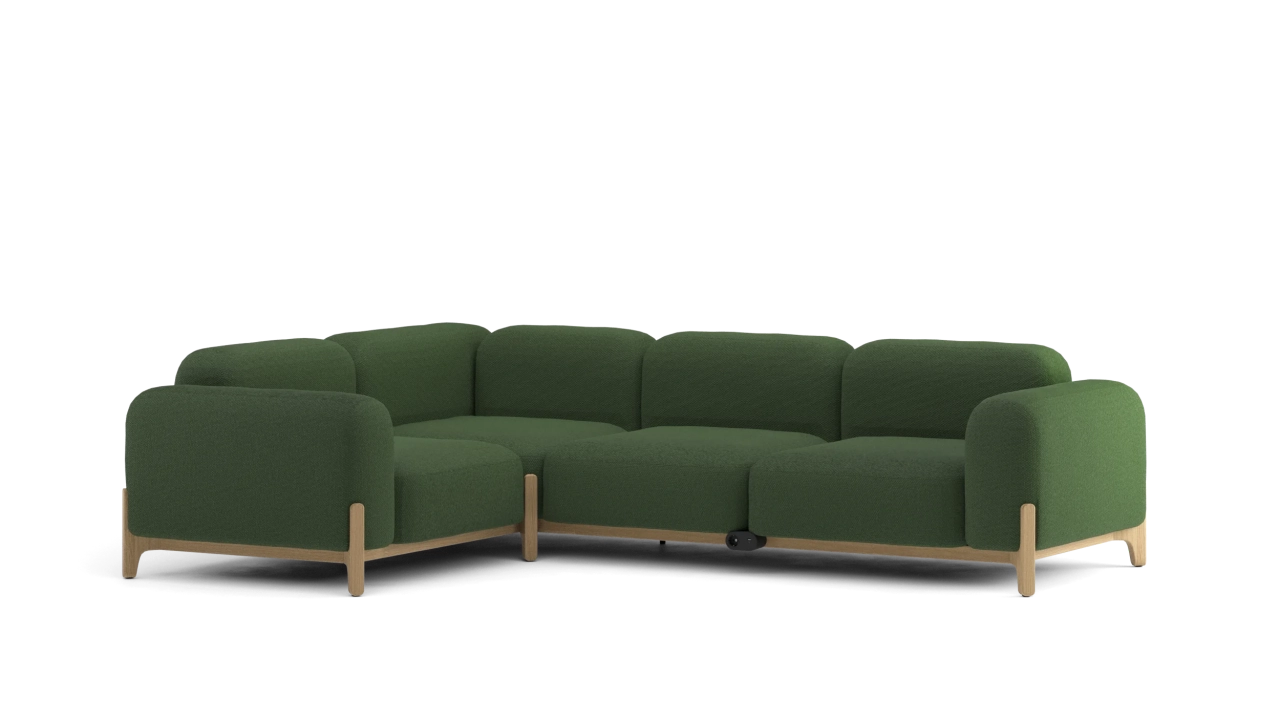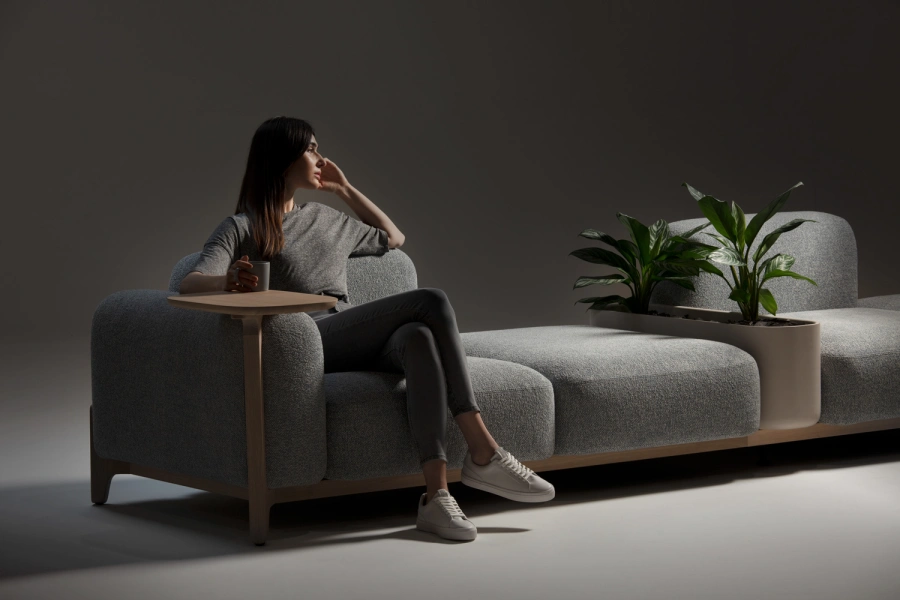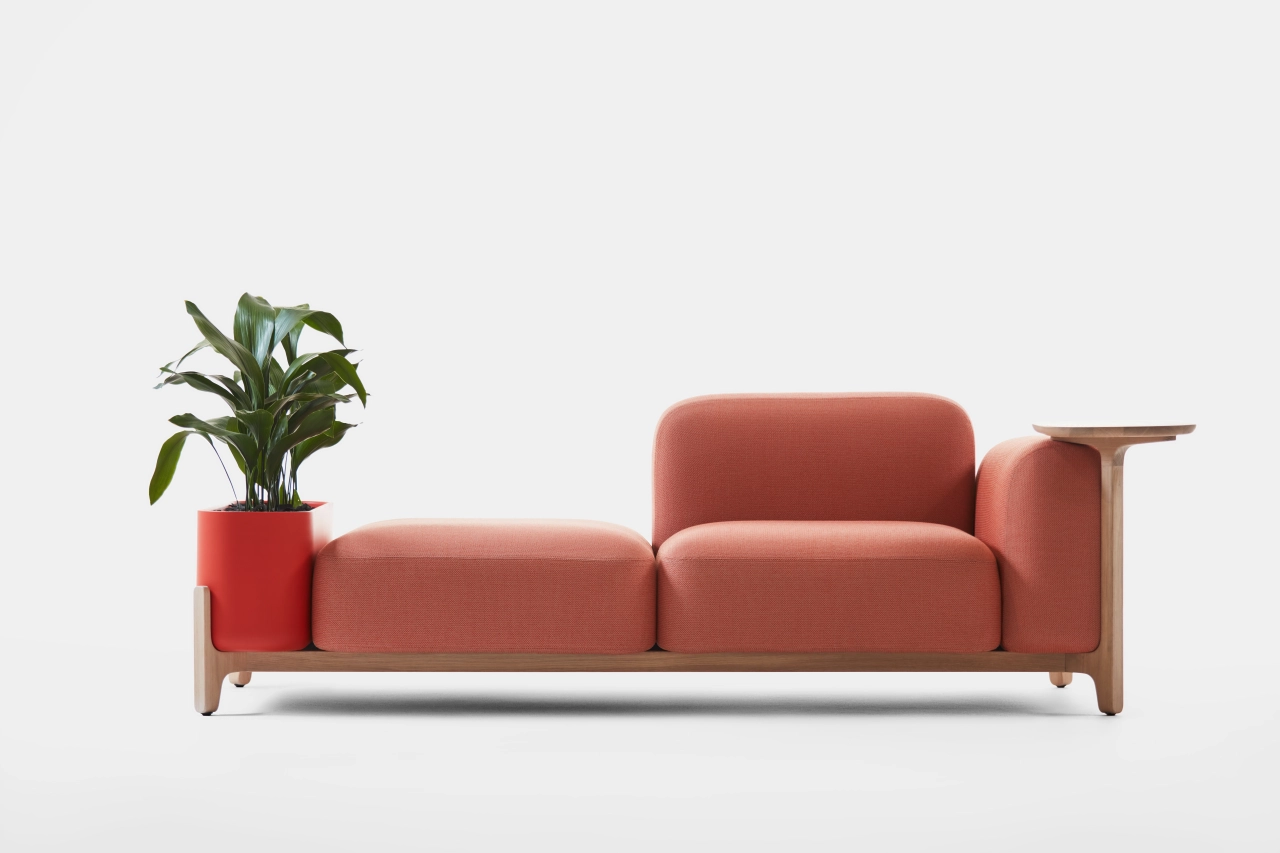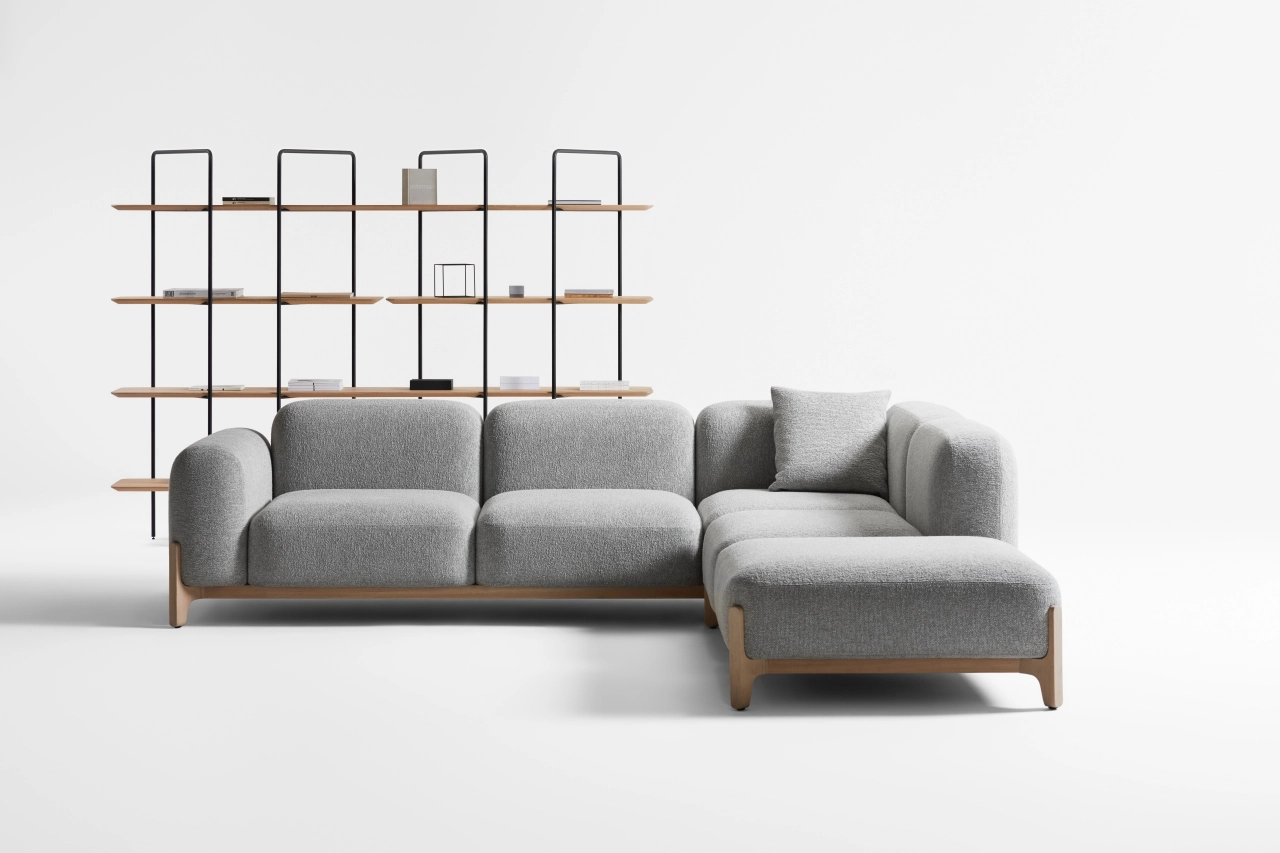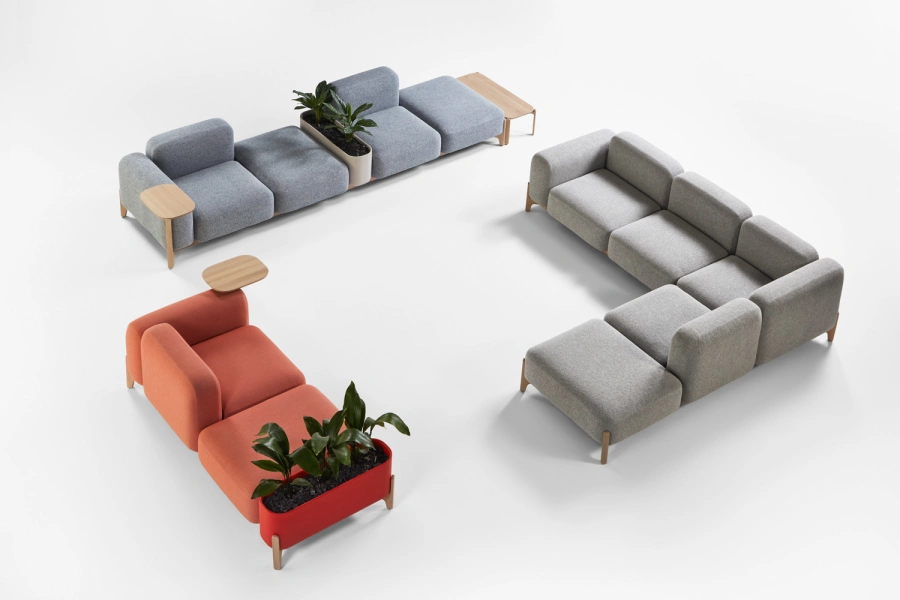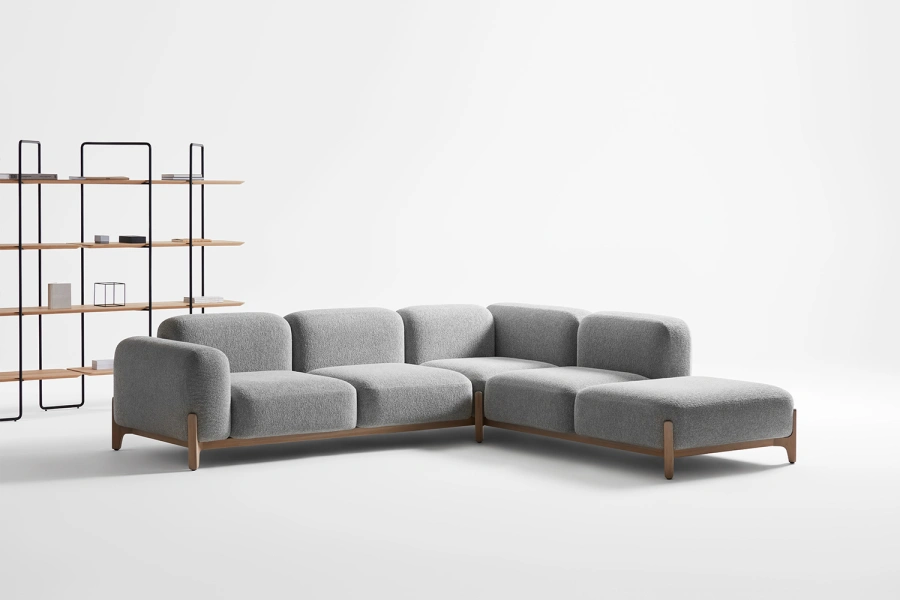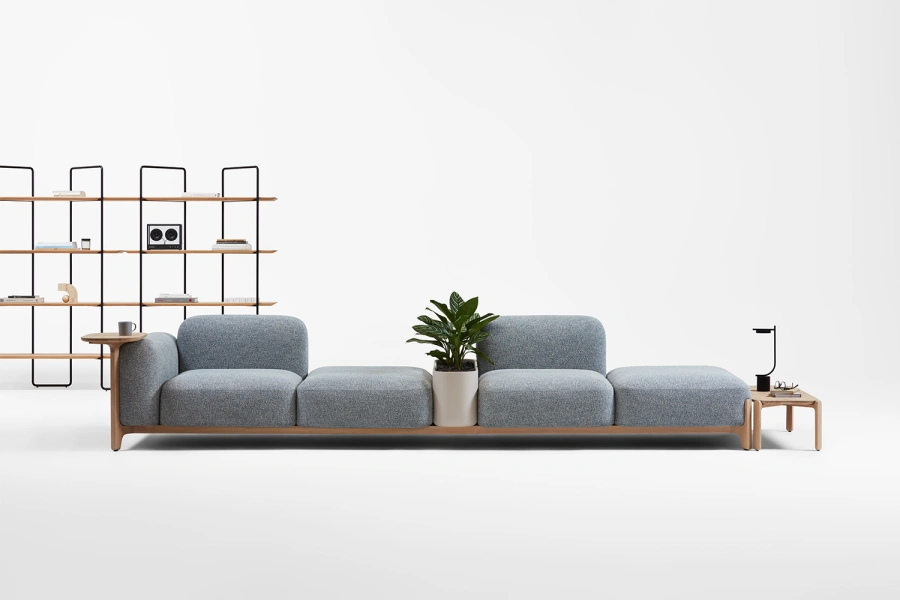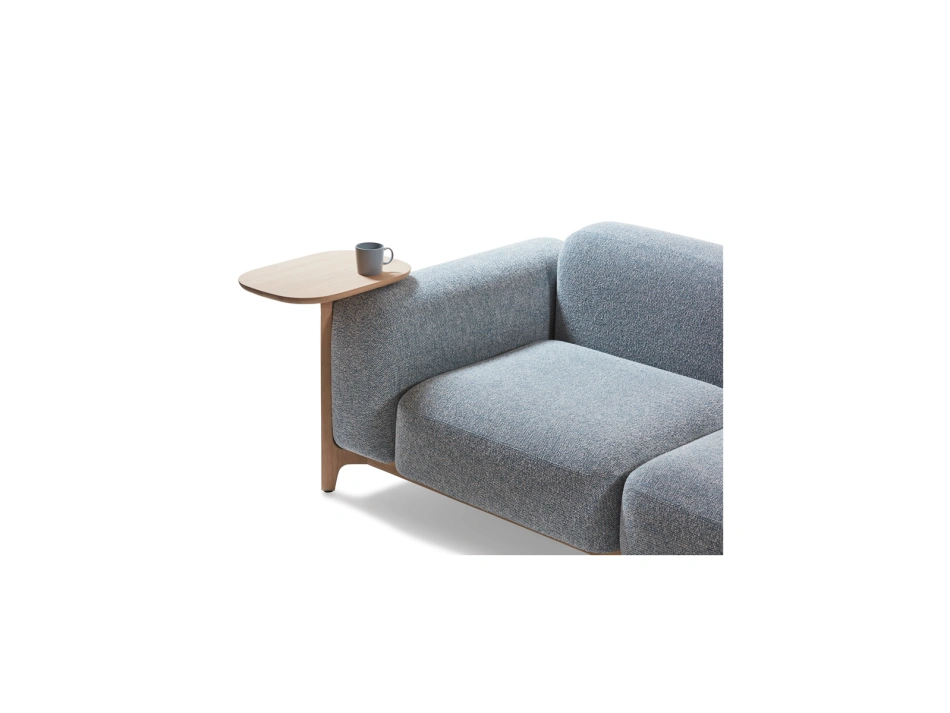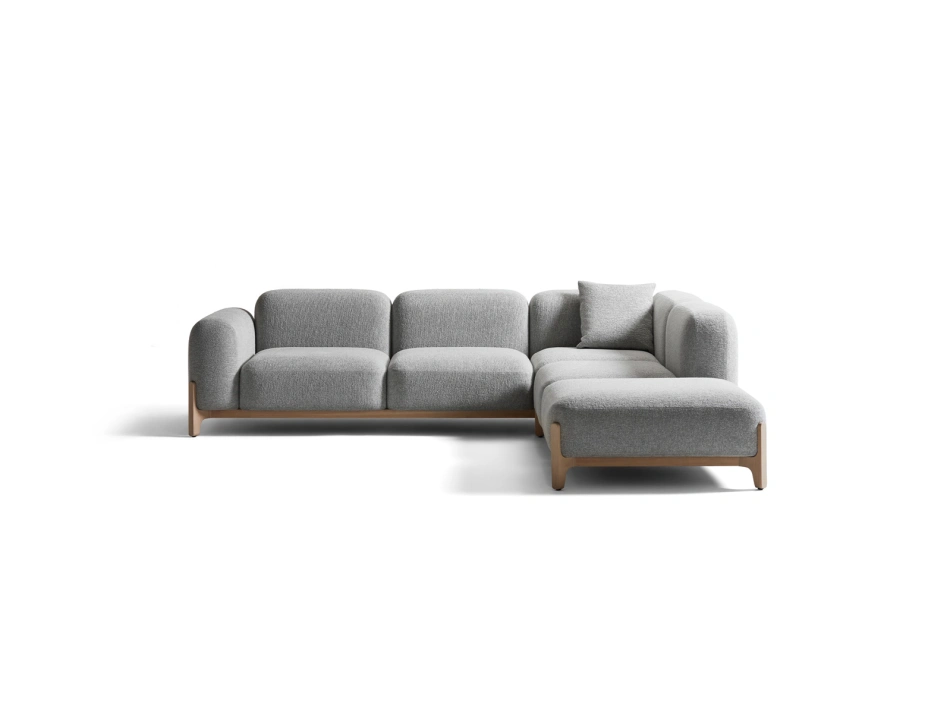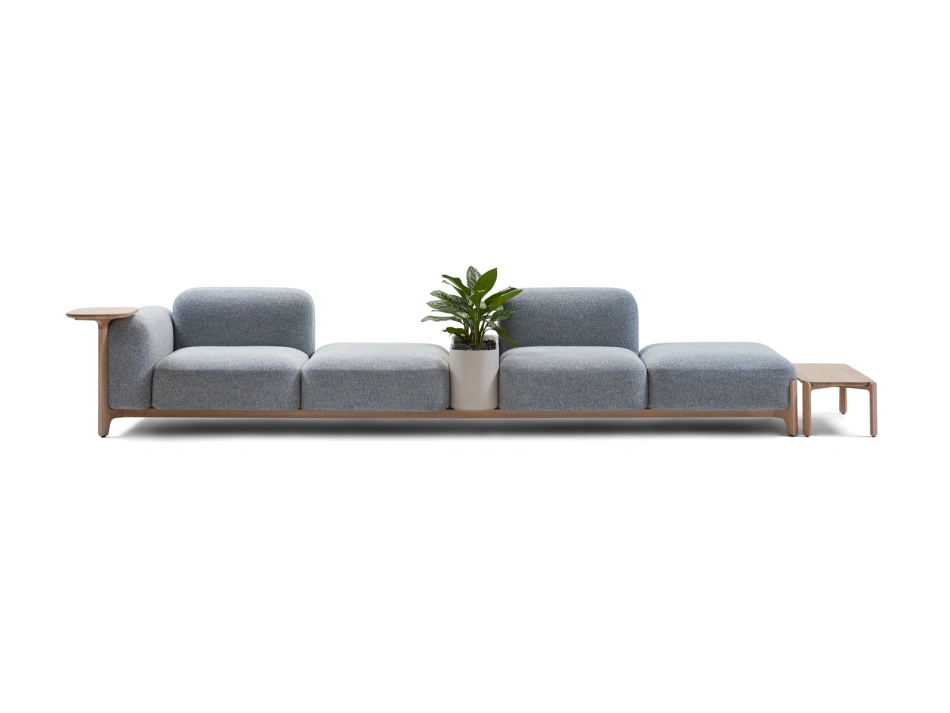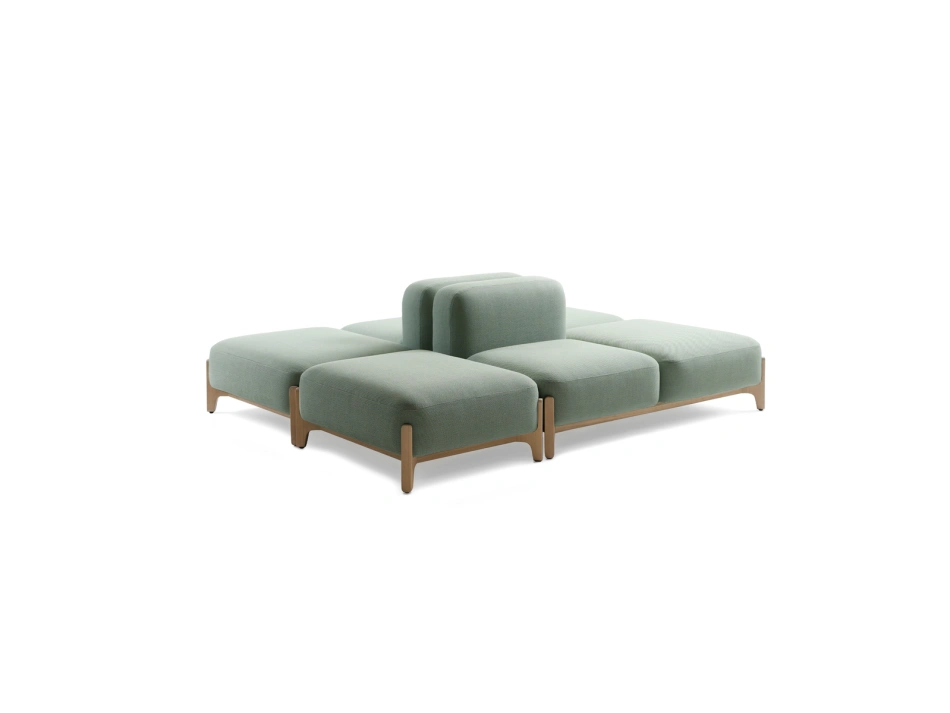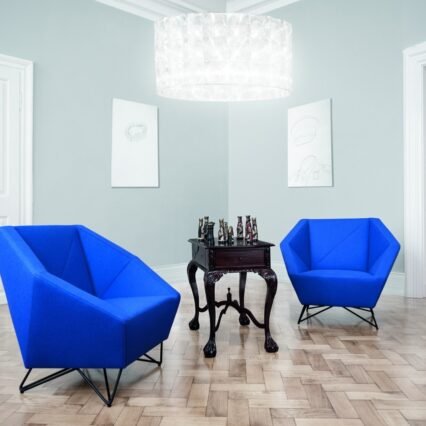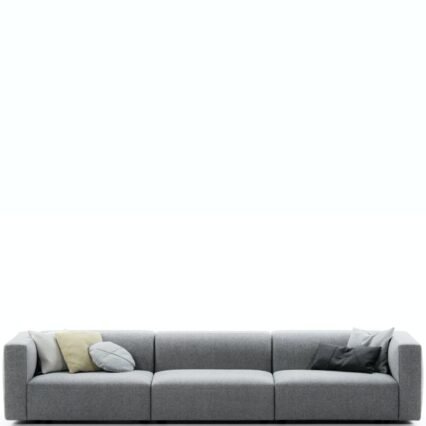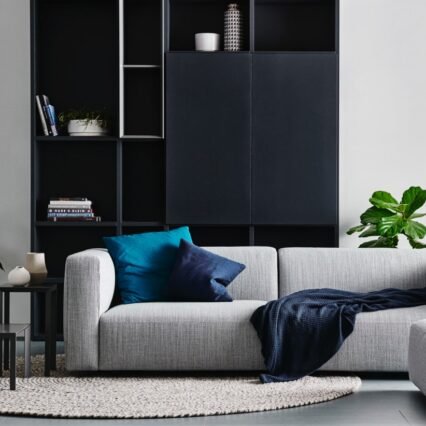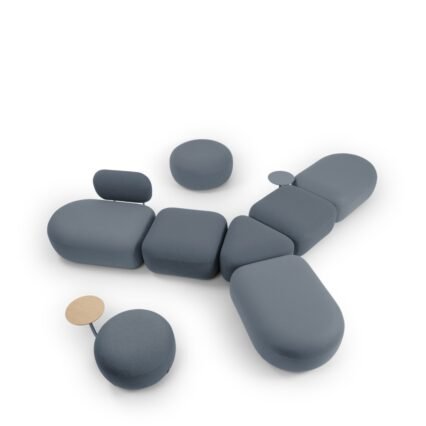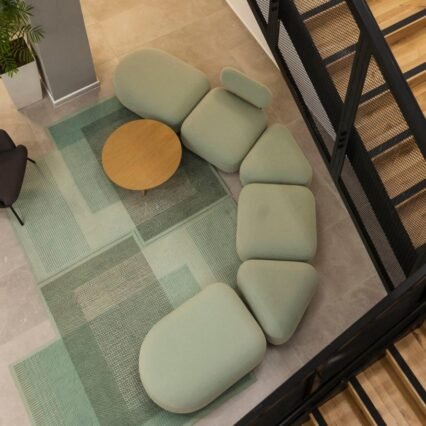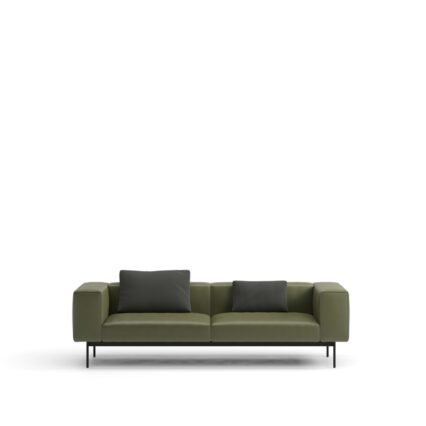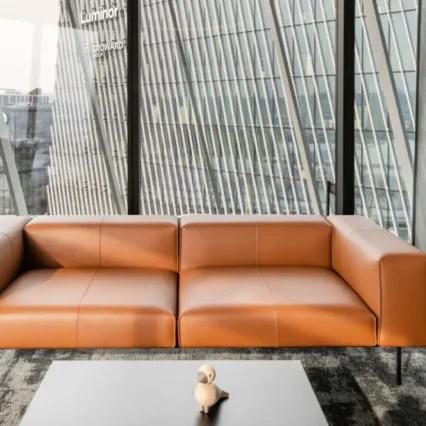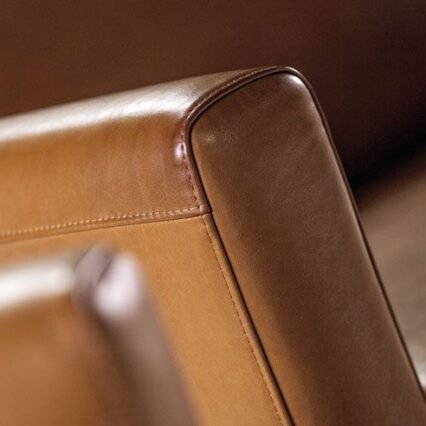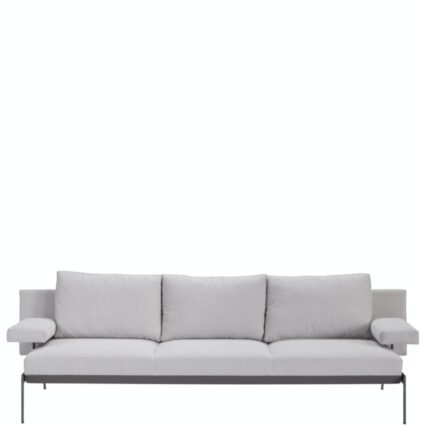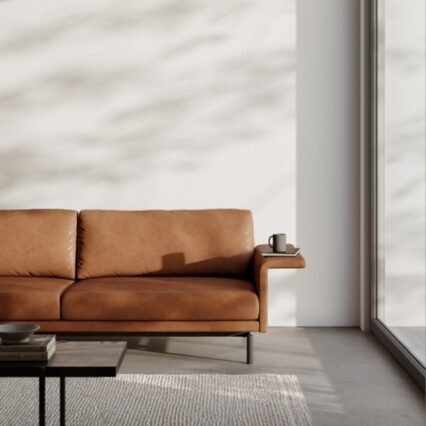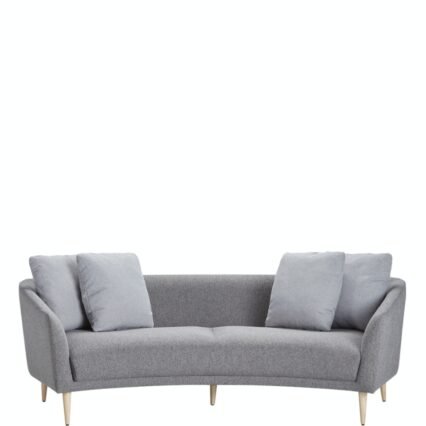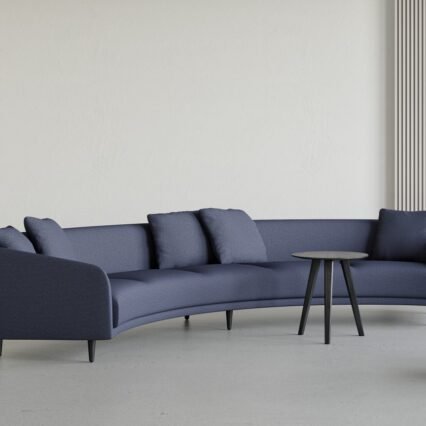sabot modular sofa
Residential softness. Commercial confidence.
PRODUCT INFORMATION
Sabot is a playful arrangement of abstract volumes supported by characterful timber feet that are a celebration of Prostoria’s woodworking capability. The modular sofa system takes its name from a type of simple, timber shoe – a nod to these wooden feet. The soft and approachable design language is inspired by residential interiors and brings a strong playful identity to commercial spaces. Each module has a super-soft, friendly silhouette that floats above the exposed timber legs in a cloud-like way, and these modules can be combined to create linear or island configurations. The movable side accessories – including tables and dividers – mimic the floating language of these seating modules, while planters offer the ability to create green privacy screens.
Sabot can be configured to create linear two-, three-, or four-seat sofas and asymmetrical S-shaped configurations that allow for added privacy between seating. The modules can also be connected together to form islands or clustered arrangements. These flexible configurations of low table tops, poufs, and seating modules offer mixed-capacity seating for dynamic spaces, such as break-out areas, lobbies, and receptions.
Features
| Base | metal + powder coating + solid wood |
|---|---|
| Suspension | elastic webbing |
| Upholstery | fabric (removable) |
| Seat & backrest | molded foam |
| Planter | PP |
| Planter top | solid wood / MDF + Fenix NTM |
Please contact our sales office for COM/COL order details.
Applied to all metal parts. All colors listed below are from the RAL catalog.
Copmpact laminate (HPL) used on table tops. These table tops also suitable for outdoor use.
Lacquer finish used on table tops and wooden chair and sofa legs.
Fenix used on the table tops.
Used on table tops and cabinet shelves.
Prostoria Sabot collection is made to order. Lead times 14-16 weeks.
GALLERY
VARIANTS
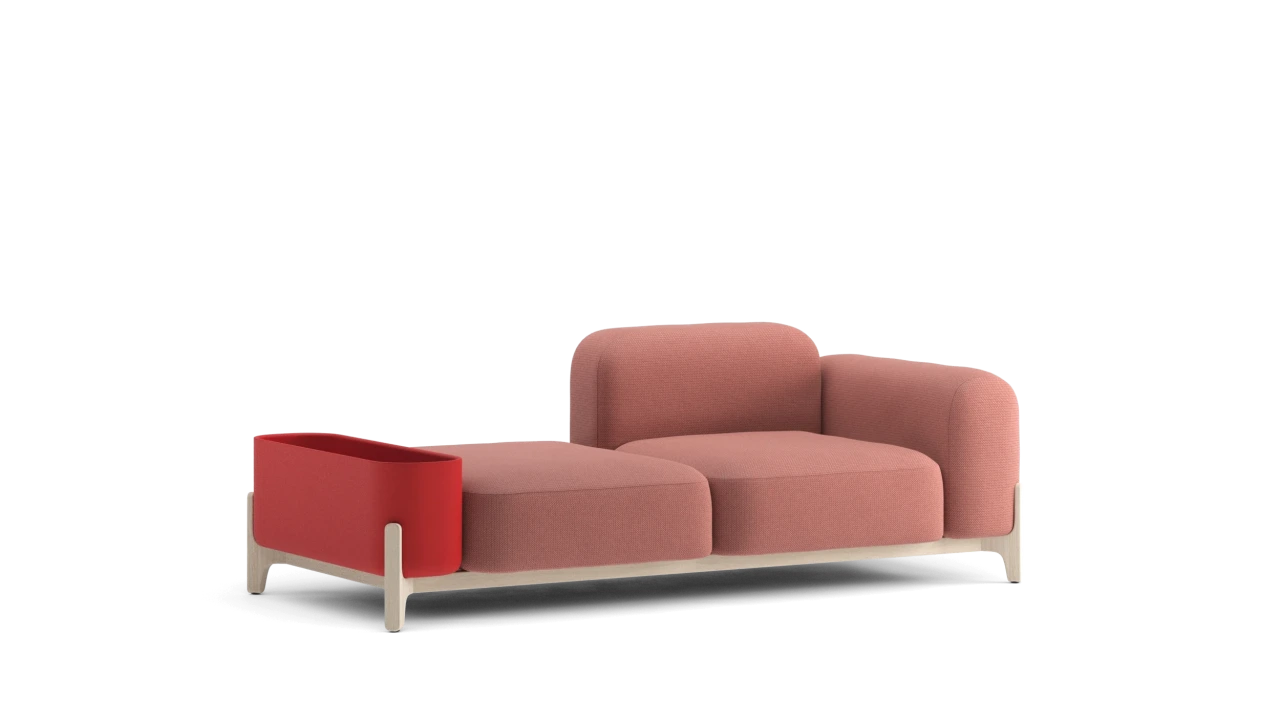
Composition 06/L
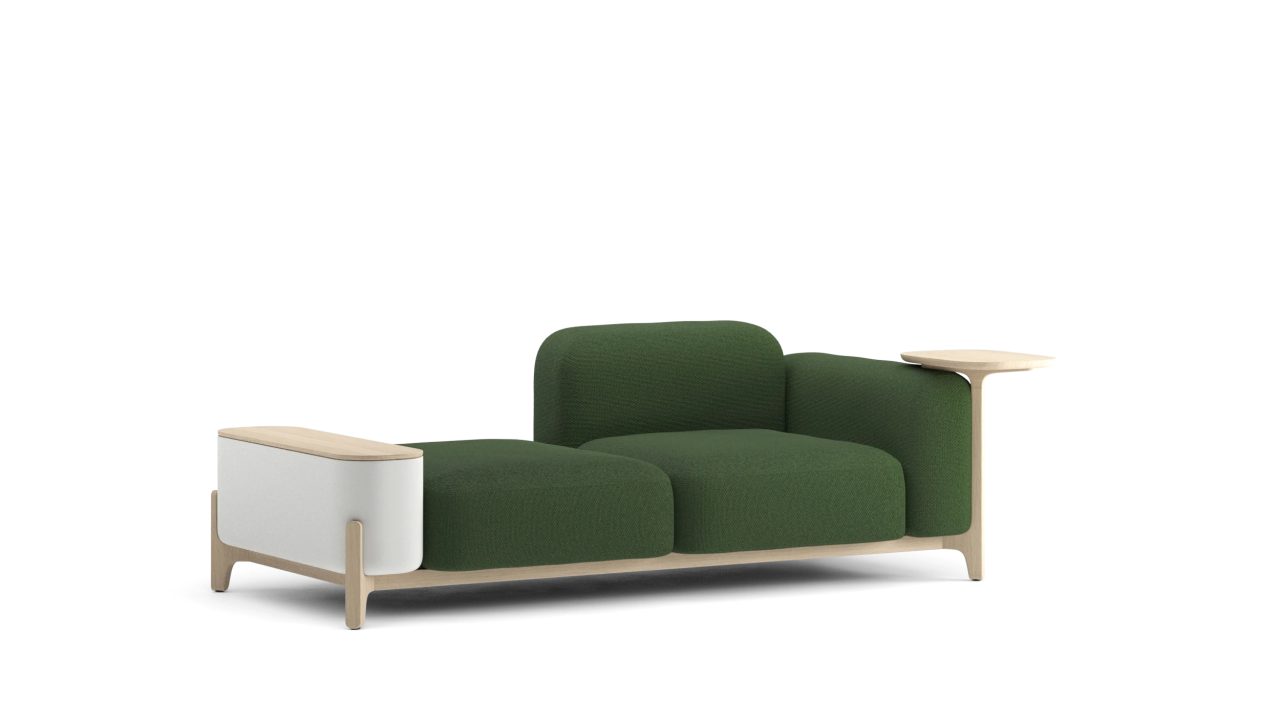
Composition 31
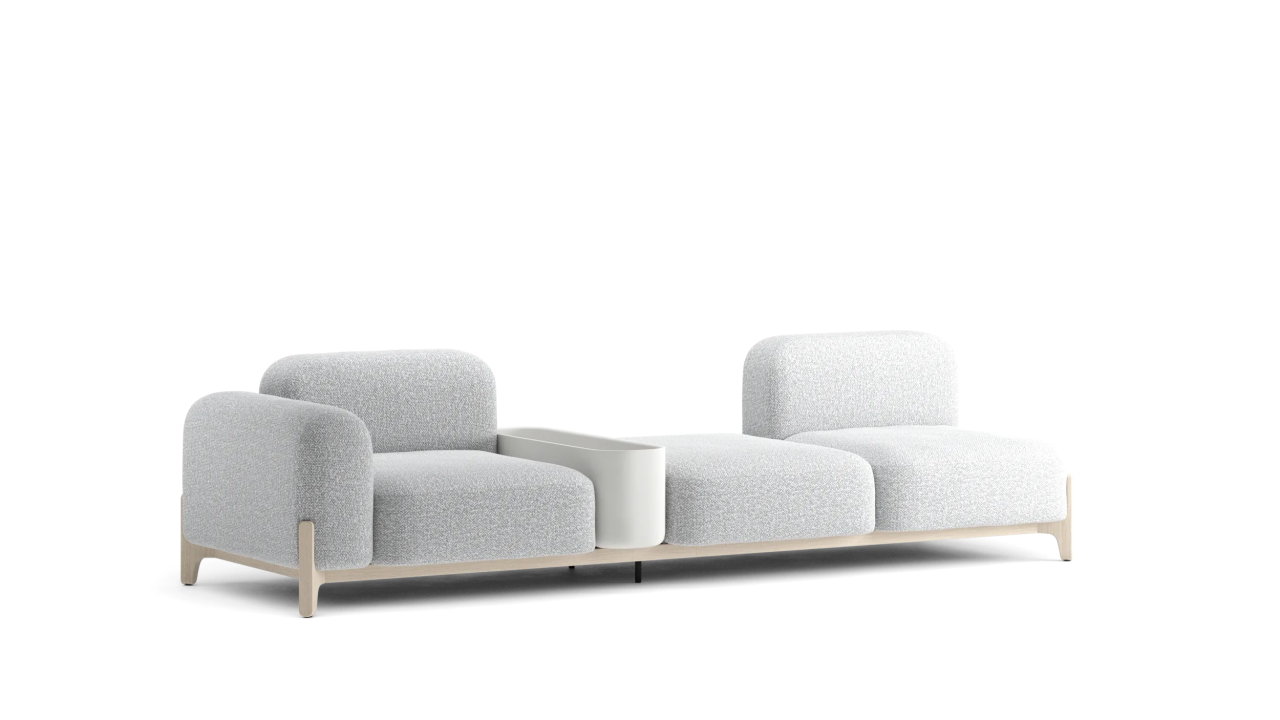
Composition 11/L
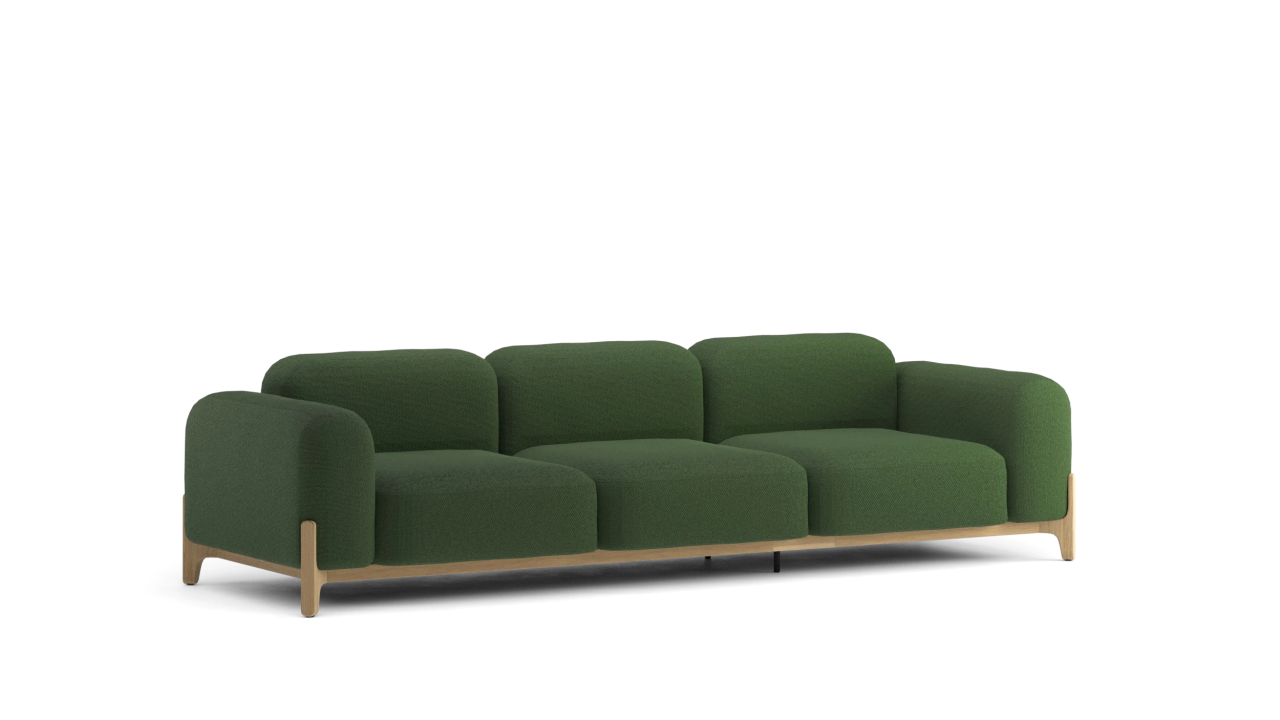
Composition 13/L
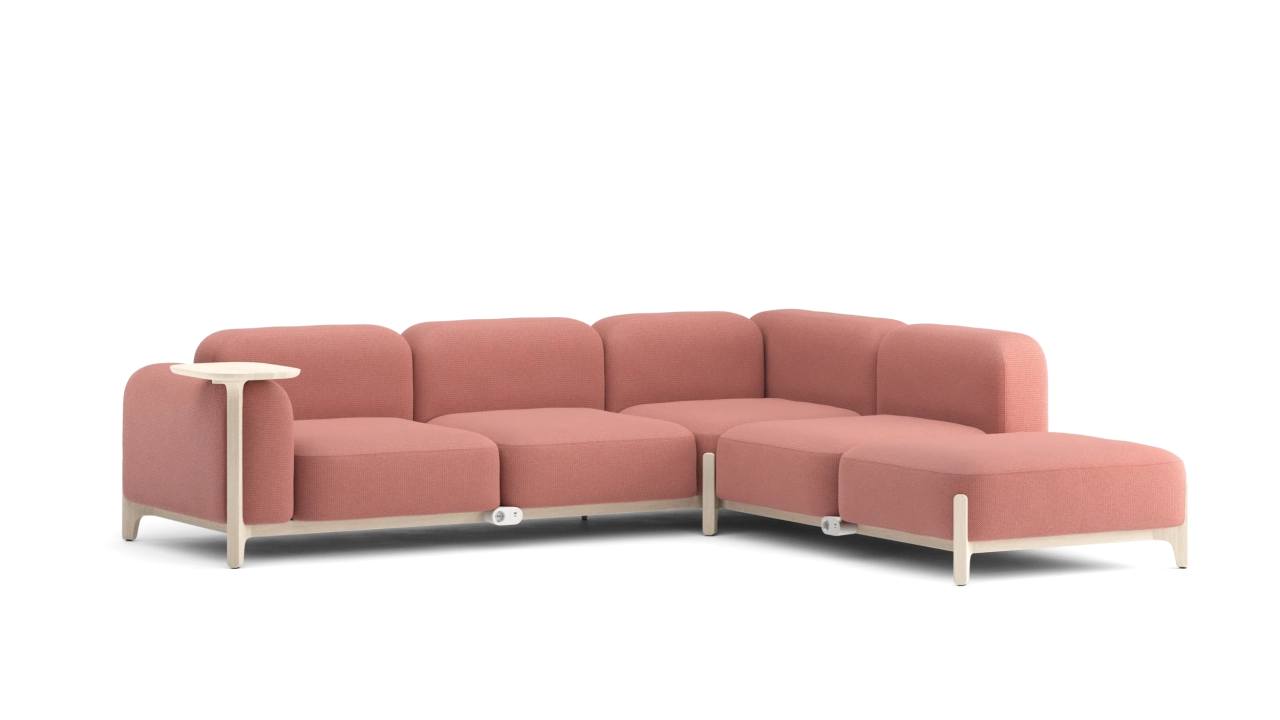
Composition 30/L E1+2
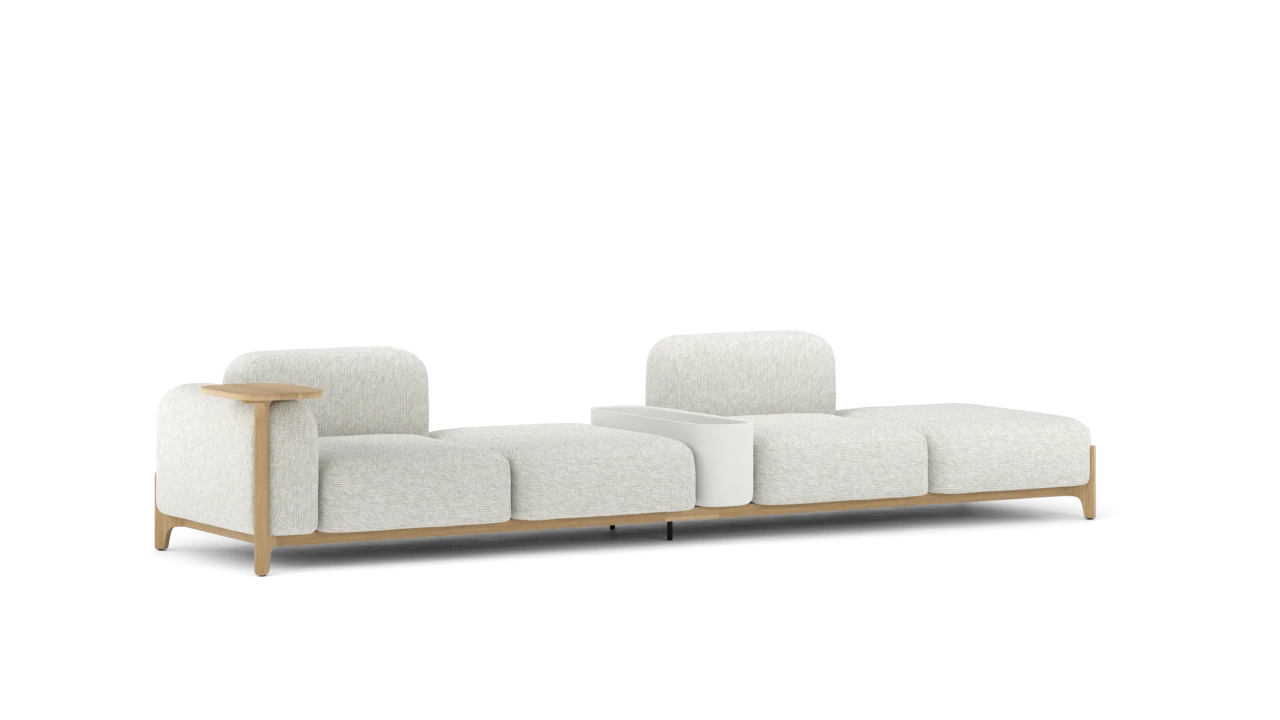
Composition 32/L
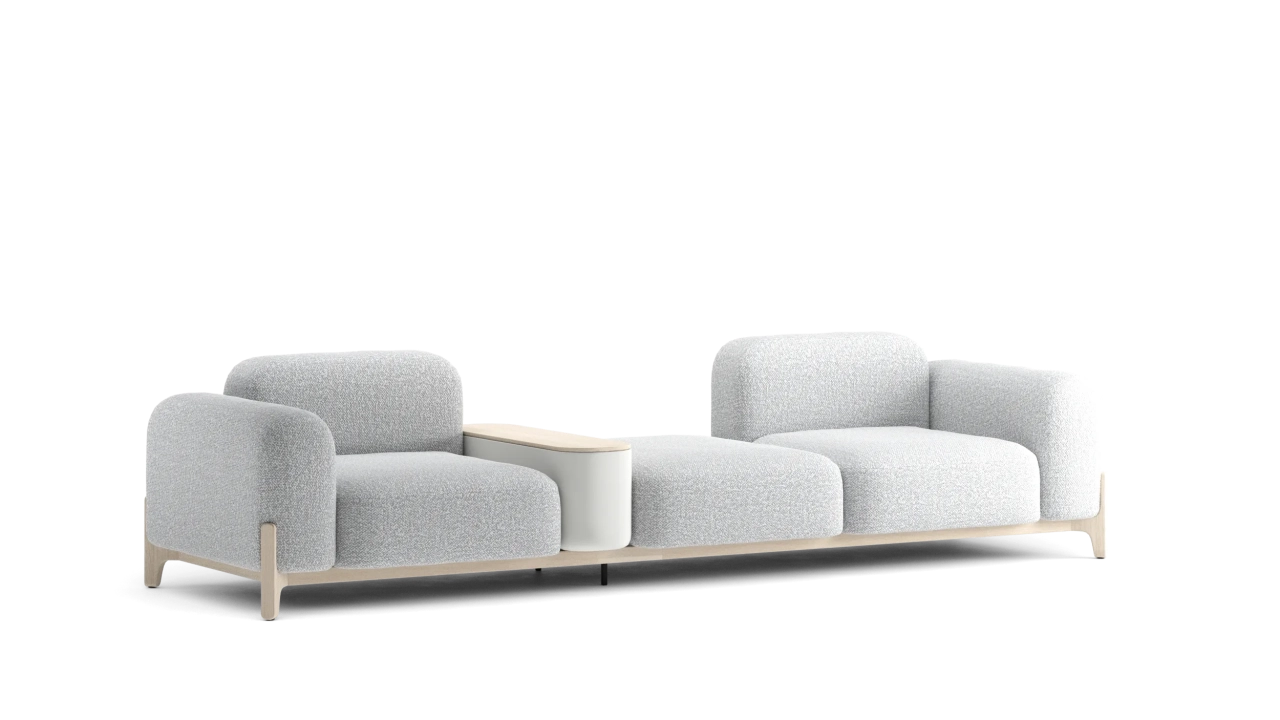
Composition 14/R
